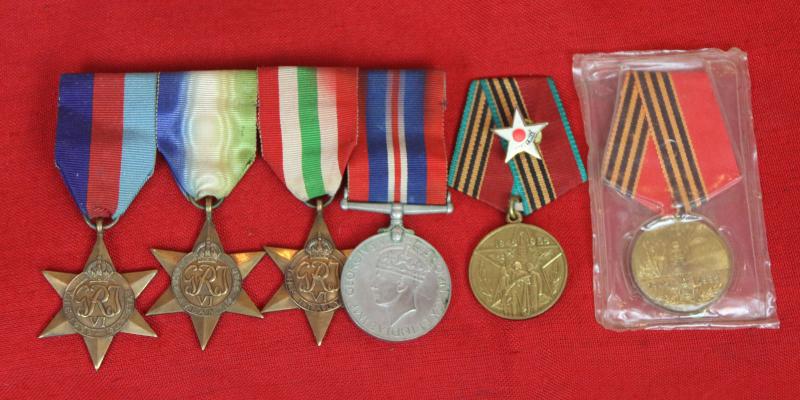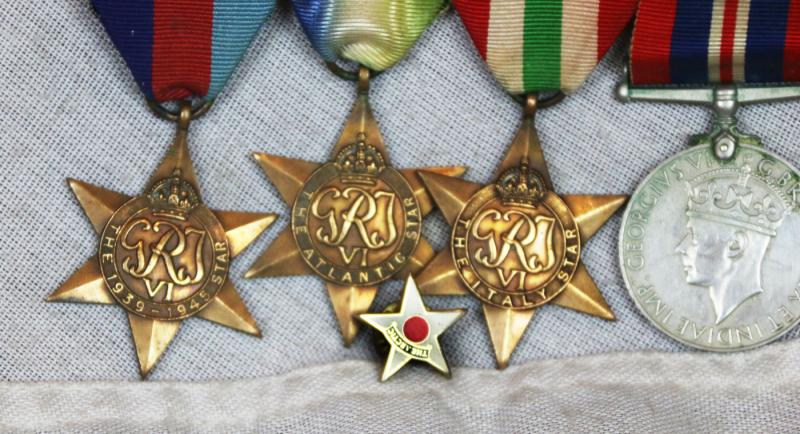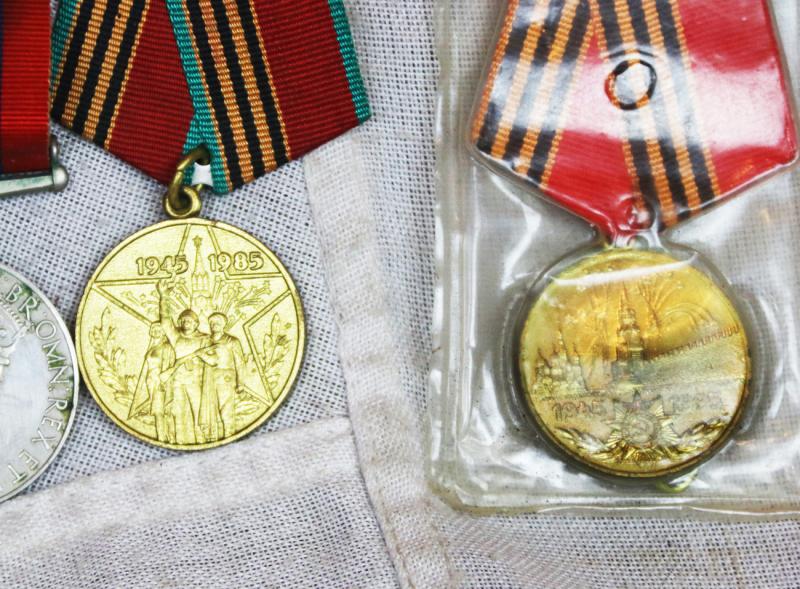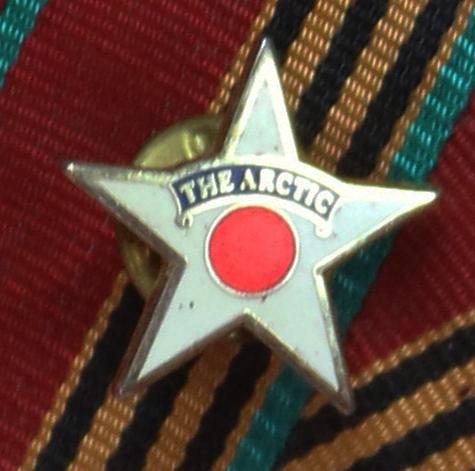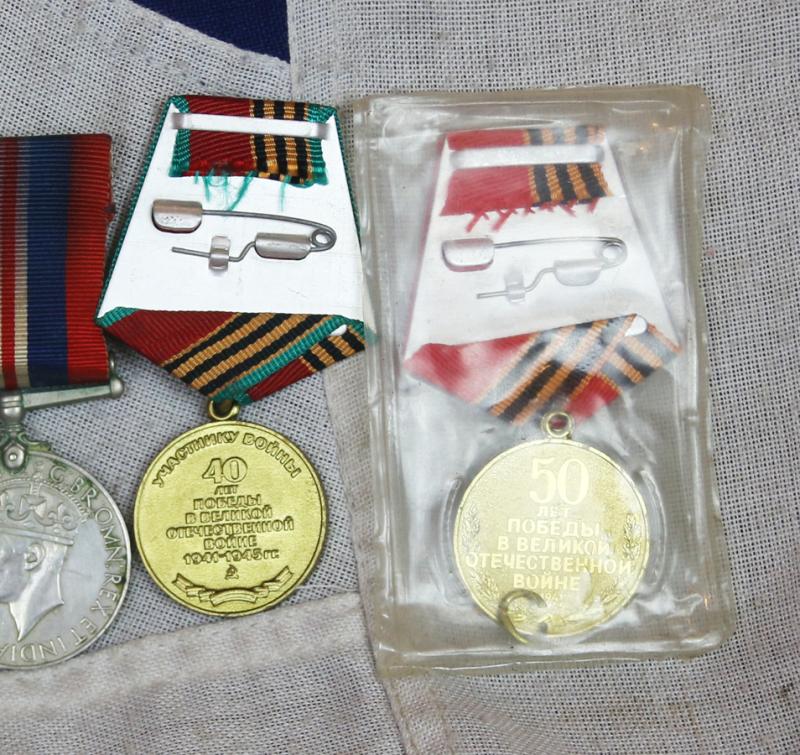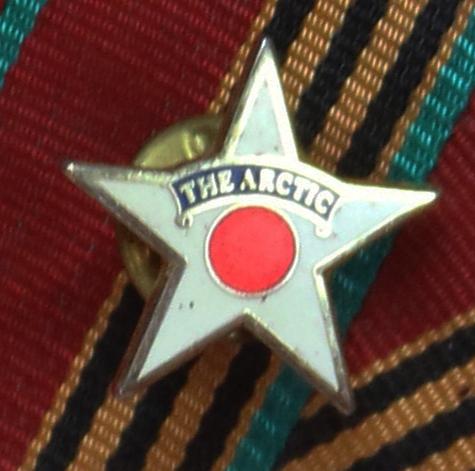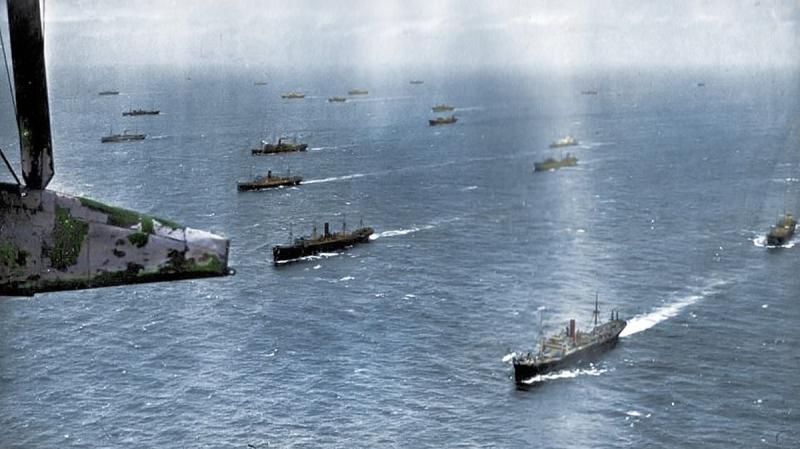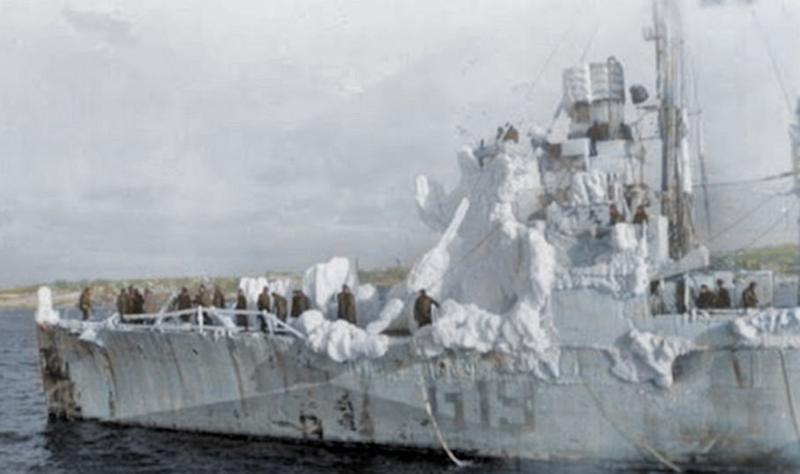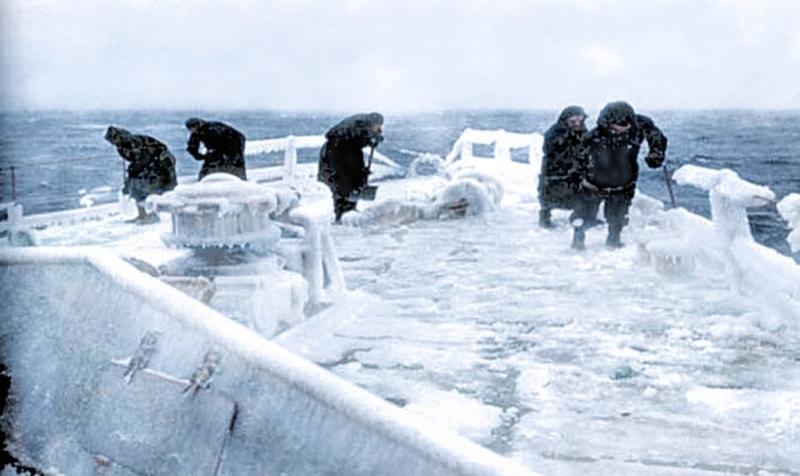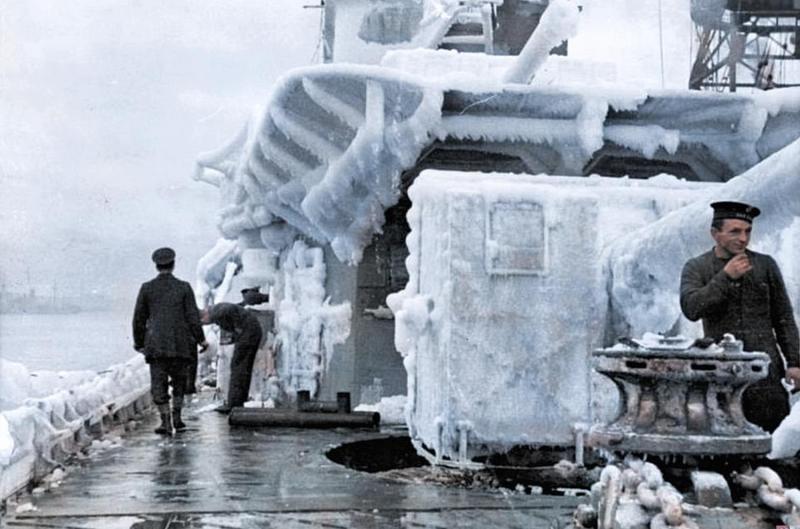A Nice WW2 Naval Arctic Convoy Medal Group of 5 + 1 Medals, North Atlantic Arctic Convoy Veteran Including His White Enamel Arctic Star Badge & Two Russian WW2 Commemorative Medals, a 40 year and 50 Year Still Sealed issue
1939-1945 Star, Atlantic Star, The Italy Star, 1939-45 War Medal, with his small, Arctic, white & red sun enamel & gilt star, plus 40 year issued 1985 and 50 year issued 1995 USSR commemorative war medals, the 50 year medal is still heat sealed in its clear plastic packet of issue.
The medal recipient would have qualified for the Arctic Star as well, but it was not issued or permitted wear until around 70 years after the wars end in 2013, and he had died before its issue. If he had received it, as was his due in 2013, that rare medal alone would be worth over £500. It is the only medal ever issued by the then monarch, the Late Beloved Queen Elizabeth II, that bears the effigy of a deceased past monarch, King George VIth, the Queen's similarly beloved father.
USSR medal for the 40th anniversary of the war with Germany. Awarded by the USSR to veterans of the arctic convoys who were given permission to accept and wear this by the UK Government.
HMS Belfast was commissioned into the Royal Navy on 5 August 1939 but its war service came to a premature end on 21 November, when it detonated a German magnetic mine. On Christmas Day 1942, repaired and modernised, it arrived under the command of Captain Frederick Parham to join the 10th Cruiser Squadron at Scapa Flow, in the Orkney Islands. There followed a punishing 18 months operating in support of the Arctic Convoys, delivering essential supplies to the Soviet Union.
By 1942 the Arctic Convoy route to Russia via Iceland had become one of the great naval battlegrounds of the Second World War, and HMS Belfast's first year was a demanding one. Its role included convoy screening (defending the ships in convoy) and endless duty on the Northern Patrol off Iceland, watching for attempts by enemy warships to break out into the Atlantic.
In the Arctic the weather was arguably a greater threat than the Germans, and the special Arctic clothing issued was barely adequate. Just moving around the icy decks in rough seas and darkness could be lethal for the unwary, despite the safety ropes which were provided. Veterans remember mess decks inches deep in dirty sea water and going months without mail or leave, other than brief runs ashore to the tiny island of Flotta, the site of Scapa Flow’s Fleet Cinema.
While afloat, sailors made their own entertainment. Cards, and ‘uckers’, the Royal Navy’s version of Ludo, were popular, as were model-making, boxing competitions and, perhaps unexpectedly, embroidery. ‘Crown and Anchor’, the illegal gambling game in which vast sums were won and lost, was popular everywhere, despite the risk of severe punishment if the participants were caught. The men also read whatever they could get their hands on.
Convoying essential war supplies to the Soviet Union did not guarantee the sailors a warm welcome. Murmansk, the principle destination for HMS Belfast, was small, poor and close to the front line, with the local inhabitants living under the iron grip of Stalinism.
Ships sailed through the darkness, fog and appalling cold of the Arctic winter as they were battered by huge waves.
But the weather was as nothing compared with the fear of being attacked by German warplanes, battleships and U-boats.
A total of 78 convoys delivered four million tons of vital cargo and munitions to the Soviet Union – allowing the Red Army to repel the Nazi invasion.
The cost in lives was horrific with more than 3,000 UK seamen killed in the icy waters of the Arctic Ocean. Their sacrifice on those terrifying trips kept Russia supplied and fighting on the Eastern Front.
Over four years, the convoys delivered 7,000 warplanes, 5,000 tanks and other battlefield vehicles, ammunition, fuel, food, medicine and further emergency supplies. One image in the gallery is of a fleet of convoy ships taken by a Royal Air Force Short Sunderland flying boat in 1943.
In total, 85 merchant and 16 Royal Navy vessels perished between 1941 and 1945. But it is likely Nazi Germany would have won the Second World War had the convoys not eventually succeeded.
Churchill proposed the convoys following Operation Barbarossa, Germany's invasion of Russia. Cabinet documents reveal he promised to supply Stalin 'at all costs'.
Operationally there was resentment that the Soviet Navy did not supply more help to the convoys. With regard to the ships and crews that reached Murmansk and Arkhangelsk, it was felt that they were treated with suspicion and regarded as unwelcome visitors. Their freedom of movement was very restricted. They were allowed little scope
for relaxation, subject to surveillance and NKVD entrapment attempts. Women they socialised with would suddenly disappear, with the only explanation that they had ‘gone for a holiday in the Urals’. Facilities in Murmansk especially were rudimentary by western standards, and attempts to improve them were met with hostility. When the British tried to send out a hospital unit to provide medical care for wounded personnel it was refused entry, with the Soviet authorities regarding it as an insult against their own facilities.
As far as individual crews were concerned, it is clear than many ordinary seamen went to Russia with a great deal of sympathy for the Soviet Union and its politics. Their disillusion was profound. One wrote: ‘It was uphill work. The language difficulty could have been overcome with goodwill, but all gaiety and light-hearted talk was smothered by the dour, unsmiling political commissars who attended every occasion, their mean suspicious eyes flickering like cornered animals
Code: 24619
375.00 GBP

